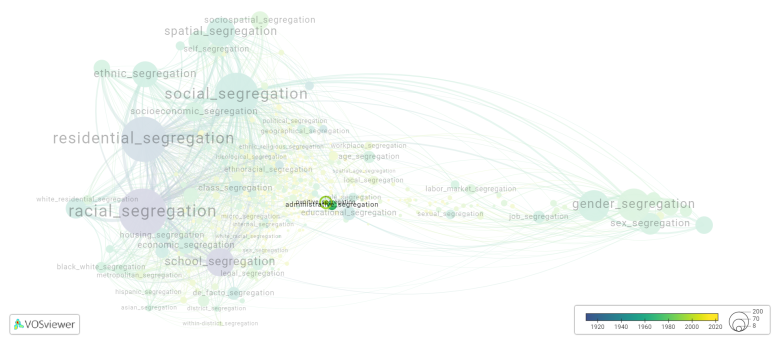Punitive segregation
Date and country of first publication[1]
2003
Canada
Definition
Punitive segregation refers to the practice of isolating inmates or prisoners as a form of punishment. It involves placing individuals in solitary confinement, where they are confined to a small cell for 22 to 24 hours a day and have limited human interaction, in order to punish them for their behavior or actions within the prison or correctional facility. Punitive segregation is often used as a disciplinary measure for serious infractions or for individuals deemed a threat to themselves or others. However, there is significant controversy surrounding the use of punitive segregation, as it can have detrimental effects on mental health and overall well-being.
See also
Related segregation forms
Punitive segregation is frequently discussed in the literature with the following segregation forms:
This visualization is based on the study The Multidisciplinary Landscape of Segregation Research.
For the complete network of interrelated segregation forms, please refer to:
References
Notes
- ↑ Date and country of first publication as informed by the Scopus database (December 2023).
Punitive segregation appears in the following literature
Cesaroni C., Doob A.N. (2003). The Decline in Support for Penal Welfarism: Evidence of Support among the Elite for Punitive Segregation. British Journal of Criminology, 43(2), 434-441. https://doi.org/10.1093/bjc/43.2.434
Toch H. (2007). Sequestering gang members, burning witches, and subverting due process. Criminal Justice and Behavior, 34(2), 274-288. https://doi.org/10.1177/0093854806296663
Toch H., Kupers T.A. (2007). Violence in prisons, revisited. Journal of Offender Rehabilitation, 45(3-4), 1-28. Haworth Press Inc..https://doi.org/10.1300/J076v45n03_01
Labrecque R.M., Smith P. (2013). Advancing the study of solitary confinement. Prisons and Prison Systems: Practices, Types and Challenges, 57-70. Nova Science Publishers, Inc..https://doi.org/
Morris R.G. (2016). Exploring the Effect of Exposure to Short Term Solitary Confinement Among Violent Prison Inmates. Journal of Quantitative Criminology, 32(1), 1-22. Springer New York LLC.https://doi.org/10.1007/s10940-015-9250-0
Kelly T. (2016). Laws of Suspicion: Legal Status, Space and the Impossibility of Separation in the Israeli occupied West Bank. Rules of Law and Laws of Ruling: On the Governance of Law, 83-99. Taylor and Francis.https://doi.org/10.4324/9781315607139-4
Nolasco C.A., Vaughn M.S. (2019). Construing the Legality of Solitary Confinement: Analysis of United States Federal Court Jurisprudence. American Journal of Criminal Justice, 44(5), 812-835. Springer New York LLC.https://doi.org/10.1007/s12103-018-9463-5
Pforte D. (202). Evaluating and Intervening in the Trauma of Solitary Confinement: A Social Work Perspective. Clinical Social Work Journal, 48(1), 77-86. Springer.https://doi.org/10.1007/s10615-019-00744-w

